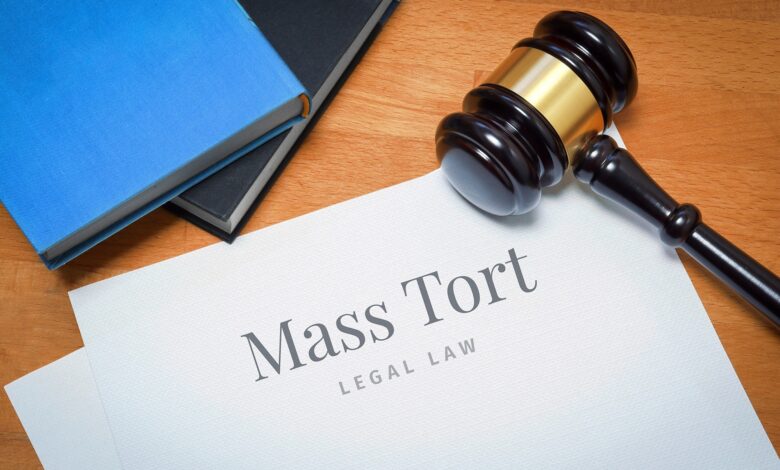Understanding Mass Torts: A Simplified Guide

When many people suffer similar harm from a common source like a defective product, prescription drug, or environmental disaster they may have legal grounds to join together in a type of lawsuit called a mass tort. While this might sound complex, the concept is straightforward.
This article breaks down what mass torts are, how they work, and why they matter, all in plain language. Read on.
What Is a Mass Tort?
A mass tort is a legal action involving many plaintiffs (the people suing) against one or a few defendants (usually corporations or organizations). These plaintiffs allege that they were harmed in a similar way often physically, emotionally, or financially due to the same product, event, or action.
The word “tort” itself refers to a civil wrong an act that causes harm and leads to legal liability. So, a “mass tort” involves a large number of people who suffer similar harm and bring legal claims based on the same wrongdoing.
Here are examples of common mass torts:
- Pharmaceutical drugs:
- Defective medical devices
- Toxic exposure
- Consumer products
Mass Tort vs. Class Action: What’s the Difference?
People often confuse mass torts with class action lawsuits, but they’re not the same. In a class action, one or several people (the lead plaintiffs) represent an entire group of people who have been similarly affected. All class members are treated as one group, and they typically receive the same settlement amount if they win.
In a mass tort, each plaintiff is treated as an individual. While the cases are grouped together for efficiency-especially during the early stages like investigation and discovery each person’s situation is evaluated separately. This means settlements or jury awards can vary based on the extent of each person’s injuries or losses.
How Do Mass Torts Work?
Mass torts follow a specific legal process. Here’s a simplified breakdown:
Investigation and Case Building
Attorneys first investigate whether a pattern of harm exists. They may receive calls from multiple people reporting similar issues like a bad reaction to a specific medication. If the harm is consistent and potentially linked to a product or action, a law firm may begin gathering evidence and filing cases.
Filing Claims
Each affected person files their own lawsuit, but the cases are often grouped in what’s called multidistrict litigation (MDL). An MDL consolidates cases into one federal court for pretrial proceedings, saving time and money.
Discovery Phase
During discovery, both sides exchange information, including medical records, emails, company data, and expert reports. This helps determine if there is enough evidence to prove the claims.
Bellwether Trials
Bellwether trials are when courts choose a small number of representative cases to try first. These can impact settlement talks and assist both parties in understanding how jurors could react to the evidence.
Settlement or Trial
Many mass torts end in settlements, where the defendant agrees to pay compensation without admitting guilt. Others go to trial, where a judge or jury decides the outcome. Depending on the case, some plaintiffs might receive large awards, while others receive smaller amounts or none at all.
Who Can Join a Mass Tort?
If you believe you’ve been harmed by a product or action affecting many others, you may be eligible to join a mass tort. Common qualifications include:
- Evidence of harm or injury
- Use or exposure to the product/event in question
- Timing of the harm
Law firms usually offer free consultations to determine if your case qualifies. Because of the complexity and costs involved, mass tort lawyers typically work on a contingency fee basis meaning they only get paid if you win or settle. Check out TSEG to learn more.
Why Mass Torts Are Important
Mass torts play a crucial role in holding large corporations accountable. Without this legal pathway, it would be nearly impossible for individuals to challenge powerful companies alone.
Here’s why mass torts matter:
- Justice for individuals
- Corporate accountability
- Public awareness
Mass torts can also result in large settlements. For example, Johnson & Johnson has paid billions in lawsuits related to talcum powder, and Purdue Pharma reached a multi-billion-dollar settlement related to the opioid crisis.
Challenges and Criticisms
While mass torts help many, they’re not perfect. Some common challenges include:
- Long timelines
- Unequal payouts
- Lawyer marketing
- Complexity
Nonetheless, for many, joining a mass tort is the best route to justice when harmed by a product or corporate behavior.
How to Get Involved in a Mass Tort
If you think you may be affected by a situation that qualifies as a mass tort, taking the first step is easier than you might expect. Many law firms specialize in mass tort litigation and actively seek potential claimants. Here are the steps to take:
- Gather Your Documentation
- Contact a Mass Tort Attorney:
- Evaluate Your Case
- Understand the Timeline and Risks
Don’t Delay:
Every legal claim is subject to a statute of limitations a time limit on when you can file. Acting quickly increases your chances of being included and receiving compensation.
The Role of Evidence in Mass Tort Cases
Evidence plays a central role in the success of any mass tort claim. Because each plaintiff is treated as an individual, it’s essential to prove both the harm suffered and its connection to the defendant’s product or actions. Here are the types of evidence commonly used:
- Medical Records
- Product Use Documentation
- Expert Testimony
- Internal Company Documents:
The strength and clarity of this evidence often determine whether a case succeeds in settlement negotiations or trial. That’s why working with attorneys who know how to gather and present it effectively is so important.
Know When to File a Mass Torts
Mass torts may seem like a complex corner of the legal world, but at their core, they’re about people coming together to seek justice. Whether it’s a dangerous drug, a defective product, or environmental contamination, mass torts give individuals a path to hold powerful entities accountable.
If you believe you’ve suffered harm like others have in a similar situation, consulting with a qualified attorney can help you understand your options. While these cases take time, they can lead to real change not just for the individuals involved, but also for future consumers.
If you want to read more articles, visit our blog.




